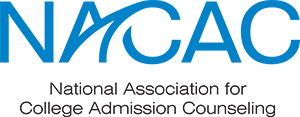How to choose your SAT test date
When you will test is often dependent on a variety of factors, and we’ve discussed it in some of our other blogs such as “To test or not to test.” You may want to consult with your college counselor since they’re more familiar with your academic profile. Some students are on an accelerated timeline due to athletic recruitment or upper-level math classes.
For the most part, students shouldn’t plan to take an official SAT until they are at least two marking periods into Algebra II material. For some students, that means they could sit for an official test after sophomore year. For others, that means they might need to wait until winter of junior year. Ask yourself some telling questions. When will you truly have time to prepare? That’s something to consider as well since you probably want to practice before you take the real thing. Are any test dates “easier” than others? Nope, that’s a myth we address in our Testing Myths blog.
Collegewise offers free diagnostics tests and consultations to help you determine what timeline might be appropriate for you.
How long does it take to get SAT scores back?
Gone are the days where you wait for an oversized envelope from The College Board to arrive in the mail 4-6 weeks after you’ve sat for the exam. Currently, if you have access to an online College Board account, the turnaround time for SATs for most national test dates is around 2-3 weeks. The exact return dates are posted on The College Board’s website and below for the remainder of the 2020-2021 academic year.
*The 2021-2022 calendar will likely be finalized by early summer (June-July), so the dates below are projections.
SAT Score Release Dates 2020-2021
|
Test Date |
Release Date |
Essay Score Release Begins… |
|
May 8, 2021 |
May 21 |
Within the following week for most students. |
|
June 5, 2021 |
July 14 |
Within the following week for most students. |
SAT Score Release Dates 2021-2022*
|
2021-2022 *Projected Test Date |
*Projected Release Dates |
|
August 28, 2021 |
September 10 |
|
October 2, 2021 |
October 15 |
|
November 6, 2021 |
November 19 |
|
December 4, 2021 |
December 17 |
|
March 12, 2022 |
March 25 |
|
May 7, 2022 |
May 20 |
|
June 4, 2022 |
July 15 |
What time of day do SAT scores usually come out?
Anecdotally speaking, scores are typically released in the morning/Eastern Time beginning the first day of release. We do not recommend getting up at 3am and refreshing every 2 minutes. At this point, you cannot change the score—you can simply observe it, so save your energy for the weekend (typically releases are on a Friday).
Not every single student’s test results are released that first day, and most students who sit for the optional essay portion (which will disappear after June 2021 unless you’re taking the SAT in school) will receive that section’s score within a week after the other scores are posted.
Why does it take that long to get my SAT score?
A number of reasons can factor into the time it takes for scores to turn around. We explore some below.
- The College Board “norms” or “equalizes” the scores which means they want to ensure that a student who took the December test and received a math score of a 500 can be compared to a student who sat in May and received a score of 500. It’s not a curve (but it kind of is…). If you’re someone who’s really into stats, you might want to read the full 2020 SAT Suite report, but we did the work for you.
- Sometimes questions are dismissed (if you see a “U” next to a question on a detailed score report, that means the question was dropped from the scale).
- A rare delay, but not unheard of, is when there is suspected cheating in relation to an individual’s test (or, in the scandal from a few years ago, a whole geographical region).
How to check your SAT score
The most common way students get their scores is by logging into their College Board account here.
Other ways you can get scores? Believe it or not, snail mail is still an option. Here’s what the College Board notes:
- Paper score reports: Students who register by mail and don't have active College Board online accounts will receive paper score reports.
- Printing your scores (desktop only): Go to your online score report, click the View Details button, then click Download Report in the top right corner.
- Scores by phone: You can get SAT scores by phone starting on the day they're released, but there's an extra fee.
- Old scores: You can call to request old scores. You'll have to pay a fee.
I took my SAT during a school day, not on a Saturday. When and how will I get my results?
School day testing is available to certain states and districts. The tests are administered during a weekday and operate on a different timeline. More information can be found on The College Board website, and please note these test results typically become available in 3 weeks or more through the individual high school’s online portal.
How to understand your SAT score
Your score is simply a reflection of how well you did on the test. It is not a measure of intelligence. At best, when combined with a student’s GPA, it might indicate how well a student will do their first semester of college. Most people forget their scores a few months after they take the test. But here are some hard data points to help you contextualize your performance.
- The national average total score as of 2020 College Board SAT report is 1051 (non-essay takers). You can drill down even further into the report if you’d like to see scores related to gender, race, and other factors such as parents’ level of education.
- The average total score range for the middle 50% of recently admitted students to Rutgers University—School of Arts & Sciences (flagship state university): 1250-1430 (See https://admissions.newbrunswick.rutgers.edu/applying/admissions-profile)
- The average total score range for the middle 50% of recently admitted students to Princeton University (private Ivy League school a few dozen miles away from Rutgers in NJ): 1450-1600 (See https://admission.princeton.edu/how-apply/admission-statistics)
- Number of colleges that were test-optional in some form prior to COVID-19: about 900
- Number of colleges that were test-optional for the class of 2021: over 1370
- According to org, more than half of American colleges are test-optional for the class of 2022.
Higher scores do not guarantee admissions to highly selective colleges (HSCs) nor do lower scores preclude admissions to many schools. The more tangible implications of scores may be scholarship or merit money at some colleges. Also, while some colleges might be test-optional, if you are seeking admission into a combined advanced degree program (for example, BSMD accelerated medicine programs) you may be required to submit scores. Whether to test, to submit scores, or to determine when it’s time to stop testing is a very nuanced process, and your counselors or other college admissions professionals can help you sort through the sundry factors you’ll need to consider.
When do SAT scores become available for schools (meaning colleges and universities)?
Make sure you’re taking a test on a date that will be accepted for admissions at the schools you’re considering. Most schools will allow testing through November of senior year even for Early Action or Decision deadlines. However, this is on a school-by-school basis. For regular admissions deadlines, you may be able to test through December of senior year but, again, please check with each individual college.
The College Board notes on their website, within 10 days after you receive all scores: We send colleges your scores, and we send your paper score report if you requested one. What they mean by “all scores” is if you’ve taken the essay, then they will wait until 10 days after that score was reported. The amount of time it takes the school to actually process the scores can vary—it could take an additional week, depending on how the college has chosen to receive them.
What's next after getting my SAT score?
Once you receive your SAT score, confirm with your counselor that you should send it to schools. Here’s a pointer: look at the schools your considering, see what their average score for admitted students is and whether your score is at that level or above. If it’s at that level or above, you probably want to include the score. If it’s below the mean, then you may consider testing again provided you can still meet deadlines or going test-optional if the school has such a policy. For a more thorough breakdown of this crossroads, check out our blog post here.
If you are planning to test again, you may want to order (by paying for) a detailed online breakdown of the questions you missed along with the actual problems themselves—if it’s available for your testing administration.
- The QAS (Question-and-Answer Service) will show you the actual problems you missed and can be ordered for the March (Saturday), May (both Saturday and Sunday) and October (Saturday) national administrations.
- The SAS (Student Answer Service) simply shows you the number of questions you missed in each section.
Information about ordering these tools can be found here.
Do colleges see all my scores?
The College Board offers “Score Choice” which means you can select individual test administrations/scores that you would like sent to schools. All sections from that date would be sent: you cannot isolate the math or reading or essay sub-scores. Each individual college has its own policy on score reporting; while many schools allow you to choose which dates you’d like sent, there are still a few that require you send ALL scores from ALL dates.
About Us: With more than twenty years of experience, Collegewise counselors and tutors are at the forefront of the ever-evolving admissions landscape. Our work has always centered on you: the student. And just like we’ve always done, we look for ways for you to be your best self - whether it’s in the classroom, in your applications or in the right-fit college environment. Our range of tools include counseling, test prep, academic tutoring, and essay management, all with the support of our proprietary platform, leading to a 4x higher than average admissions rates.



.png?width=600&height=200&name=Blog%20CTAs%20(1).png)



